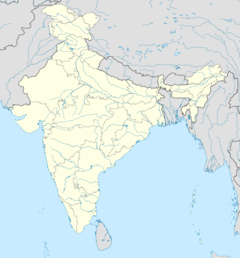Hazarduari_Palace
Hazarduari Palace
Historical building of Murshidabad, West Bengal
Hazarduari Palace, earlier known as the Bara Kothi,[1] is located in the campus of Kila Nizamat in Murshidabad, in the Indian state of West Bengal. It is situated near the bank of river Ganges. It was built in the nineteenth century by architect Duncan Macleod, under the reign of Nawab Nazim Humayun Jah of Bengal, Bihar and Orissa (1824–1838).
This article needs additional citations for verification. (September 2019) |
In 1985, the palace was handed over to the Archaeological Survey of India for better preservation.[2][3]
According to the Archaeological Survey of India as mentioned in the List of Monuments of National Importance in West Bengal, the Hazarduari Palace and Imambara are ASI Listed Monuments.[4]


